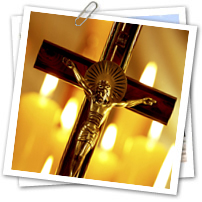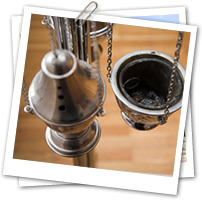Catholic Funerals Sydney


Your Best Choice For Catholic Funerals & Funeral Directors in Sydney
Catholic Funeral Services Sydney, Liverpool, Parramatta
The information listed here is a guide only, your are urged to discuss matters of the Catholic church, faith and funerals with the Parish Priest in charge of the church you are seeking to use for the funeral. Kevin and Perram Funerals Directors Sydney are proud of our long association with the Catholic Church, and are one of Sydney’s premiere providers of Catholic funeral service.
Once you have arranged the funeral with your personal funeral arranger it is important that you then contact the parish Priest in order to plan the funeral service. Each Priest will have particular requirements for the conduct of Christian Funeral Rites. It is important that you meet the Priest early in the funeral planning process. Kevin and Perram Funerals have specialist funeral arrangers for the provision of Catholic funerals, each with years of experience in the requirements of Catholic services.
The Catholic Funeral service is divided into three parts:
The Vigil Service
The Funeral Mass
The Final Committal
Below is a short explanation of each of these aspects. For complete information booklet please contact our office and we will be happy to forward you one by mail.
The Vigil Service
In Australia the service or Vigil the night before the funeral is optional, although many cultures, particularly Italians and Europeans adhere to the requirement.
Different cultures have different customs for the night before the funeral. One custom is to visit the home of the close relatives of the person who died, to sit with them, to share their grief. Some people choose to go to the funeral home. There they will view the body and pray for a short time. Some parishes have the custom of praying the rosary at the church. The rosary may also be recited in the funeral home. This is a less formal setting and offers families the opportunity to conduct many of their own personal celebrations and to share thoughts and memories in a less formal way.
The Funeral Mass
The funeral service is usually celebrated with a Mass of Christian Burial with prayers for the deceased. This is primarily an expression of our belief in the resurrection. As a Christian funeral, we praise God and give to Him our dead relative, commending him or her to God’s love.
Preparing a Mass of Christian Burial
When you discuss the funeral Mass with the Priest, you are likely to find that it enables you to express your love for the person in a unique way. You might choose to make a special booklet, although it is not absolutely necessary. The Catholic funeral liturgy is a time to welcome, give thanks and bid fair well. The following is a summary of the funeral liturgy.
Opening Hymn
Placing of the Pall and Christian Symbols
Rite of Sprinkling
Opening Prayer
1st Reading
Responsorial Psalm
2nd Reading
Alleluia Verse before the Gospel
Gospel
Homily
Prayers of the Faithful
Procession of Gifts
Eucharistic Prayer
Communion Rite
Prayer after Communion
Words of Remembrance
Final Commendation
Recessional Hymn
During the introductory rites, the community welcomes the body into the church. It is also be a time of welcome to the community who have gathered those who have come to pray in support of the family and to honour the dead person. During this time the coffin or casket will be sprinkled with holy water, a pall placed over and symbols placed.
You should think about is your choice of readings. Through them you can provide an opportunity for your family and friends to hear God speak. It is usually possible to choose a reading from each of the Old and New testaments and a Gospel reading.
The Prayers of the Faithful (also called the General Intercessions) provide another opportunity to personalise the celebration of the deceased person’s life and to enable family members to participate.
The priest may invite a close family member – one person only – to speak some words by way of welcome and remembrance to the assembled group. This is an opportunity to recall respectfully and lovingly, in a very few minutes, a little of the deceases life. Because this can be an emotional time, it is a very good idea if the words are written.
At the end of the Mass the Priest will offer final prayers at the coffin granting absolution to the deceased. At this time the coffin is sprinkled with Holy Water and Incense.
Final committal
Is the final part of the Catholic funeral service and is held at the graveside or crematorium. The rite of committal is designed to help the family and friends in the difficult moment of letting go, the closure of a mortal life. The rite begins with a short invitation, scripture verse and prayer over the place of committal. Once the body of the deceased has been committed, the Catholic funeral rite concluded with prayers of intercession for the deceased and a prayer over the people. The liturgical rite in the Order of Christian Funerals that is used for cremation is the same and that used for burials.
Sydney Cemeteries and Crematoria
Catholic funerals in Sydney can take place at any other the following dedicated Catholic Cemeteries or crematorium. These are dedicated to the provision of funeral site for Catholic families:
Catholic Cemeteries Board Necropolis
Mother or Mercy Crematorium
Catholic Cemeteries Board North Rocks
Catholic Cemeteries Board Field of Mars
Catholic Cemeteries Board Kemps Creek
Catholic Cemeteries Board Liverpool
These Cemeteries have sections dedicated for the burial of members of the Catholic faith. All Sydney crematoria are also available for the for cremation services for Catholics. All are approved by the Catholic Church for this purpose.
Kevin and Perram Funerals Services Sydney have access to all Sydney cemeteries and crematoria for the conduct of client family funerals.
Catholic Funerals and Cremation
In the Catechism of the Catholic Church the short paragraph on cremation falls under respect for the dead which is part of the larger topic of respect for the human body.
Originally, the practice was banned to counter ancient Roman pagan beliefs. The Romans cremated their dead because they did not believe in an afterlife, which is contradictory to Christian belief.
Policy change
However, in 1963 the Vatican lifted the ban on cremation, but the cremated remains or “cremains” could not be present at the funeral mass. Cremation could only be chosen if not for the reason that a person denies the teaching on the resurrection of the body. Burial was (and still is) the preferred method.
In 1997, the Vatican approved new liturgical norms allowing for the cremated remains to be present at a funeral mass and the remains are to be treated with the same reverence as a whole body in a casket. This means that spreading the cremated ashes is still forbidden.
Cremated remains must be buried, just like a body, in a cemetery, crypt, or other appropriate burial place not put on display.
Corinthians 15:51-58 “Behold, I tell you a mystery. We shall all indeed rise again: but we shall not all be changed. In a moment, in the twinkling of an eye, at the last trumpet: for the trumpet shall sound and the dead shall rise again incorruptible. And we shall be changed. For this corruptible must put on incorruption: and this mortal must put on immortality. And when this mortal hath put on immortality, then shall come to pass the saying that is written: Death is swallowed up in victory. O death, where is thy victory? O death, where is thy sting? Now the sting of death is sin: and the power of sin is the law. But thanks be to God, who hath given us the victory through our Lord Jesus Christ. Therefore, my beloved brethren, be ye steadfast and unmoveable: always abounding in the work of the Lord, knowing that your labour is not in vain in the Lord.”



